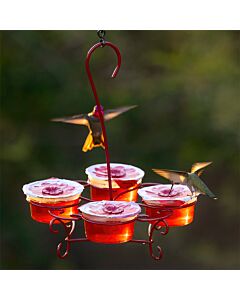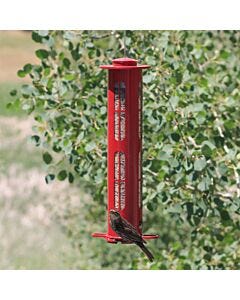RUBY-THROATED HUMMINGBIRD
BIRD LIBRARY »
Appearance of the Ruby-throated Hummingbird
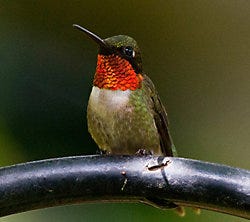
The adult Ruby-throated Hummingbird sports metallic green feathers along its head and back. Its breast and belly feature gray-white feathers. Ruby-throated wings are nearly black.
The male gives the species its name thanks to a ruby-red throat patch, which is called a gorget. Like its metallic green feathers, the gorget has an iridescence as well. The female Ruby-throated hummingbird doesn’t get the fancy gorget. She is distinguished by a white throat and a dark, rounded tail with white tips.
As with other hummingbird species, the beak of the Ruby-throated Hummingbird is exceptionally long and narrow. The Ruby-throated Hummingbird’s tongue is even longer! The tongue allows the hummingbird to pump (not suck) nectar out of a flower or feeder exceptionally fast.
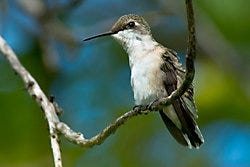
Like all hummingbirds, the Ruby-throat’s blade-like wings connect to the body only at the shoulder, a feature that other birds don’t have. This unique design allows the wings of the hummingbirds to rotate almost 180°. This functionality creates a wide range of mobility in flight, including the ability to hover and fly backwards.
The male Ruby-Throated Hummingbird is smaller than the female. The largest Ruby-throated Hummingbird grows to about 3 inches long, and that small size can make it a prey species for larger birds, domestic cats, snakes, spiders and even praying mantises.
Geography of the Ruby-throated Hummingbird
The Ruby-throated Hummingbird breeds in most areas of the eastern half of the United States, making it the most widespread hummingbird species in the U.S. Its range in southern Canada goes much farther west than it does in the U.S., reaching into the province of Alberta.

In the fall, Ruby-throated Hummingbirds migrate to their winter range, a zone that extends from Mexico to Panama in Central America. In general, they stay in this zone from November through February.
During their migration journeys, most Ruby-throated Hummingbirds opt to fly non-stop over the Gulf of Mexico. This endurance run can take up to 22 hours, and, in some cases, the trip is as long as 500 miles.
A group of Ruby-throated Hummingbirds also lives year-round in the Outer Banks island chain in North Carolina. Normally, the species leaves such northern latitudes by early October, but this group has found sufficient food and shelter to reside there through the entire year.
Local Environments of the Ruby-throated Hummingbird
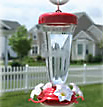
The Ruby-throated Hummingbird prefers to live in deciduous and pine forests, farm orchards and flowering gardens. These habitats provide them with the perfect mix of food, water and nesting opportunities.
Since the introduction of the first commercially available hummingbird feeder by Perky-Pet® in 1958, these tiny birds are increasingly found in suburban yards. This is a direct result of the increasing addition of more and more hummingbird feeders in suburban settings.
Ruby-throated Hummingbirds (and many other birds) can also be regularly attracted by clean water sources, which they use for bathing and drinking.







